Twenty Top Fun Facts About The Constellations
Learn About The Constellations!
The word constellation comes from a Latin word meaning ‘set of stars’ and simply refers to a prominent group of stars on the celestial sphere that trace out imagined or meaningful patterns that represent mythical characters, animals, ancient gods and objects of the past.
20 Fun Facts About The Mythical Constellations
- The knowledge of constellations stretches back to the Greeks who likely inherited their understanding of the stars from the Ancient Egyptians who likely improved on knowledge from the Babylonians and Summerians before them. There have even been cave paintings and carvings made by humans from 17,000 thousand years ago which depicts groups of stars!
- Classical Chinese astronomy also recorded and named constellations with many of their star maps surviving until today.
- Earlier cultures used constellations to organize the night sky in recognizable forms for various religious matters, to study the celestial heavens, navigation, predicting seasons and measuring time.
- We have the Greek and Romans to thank for the names of the constellations with many of them relating to their mythological heroes and legends.
- There are 88 officially recognized constellations by the International Astronomical Union (IAU).
- 36 of the 88 constellations lie predominately in the northern skies and the remaining 52 visible primarily in the southern skies.
- Star Charts have been specifically designed to help adults and children navigate their way through the stars and constellations. Learn how to use one by reading our guide to Star Charts!
- It’s not just stars that make up the constellations, many nebulae and galaxies are also included!
- The Sun is the only star in the Milky Way galaxy that doesn’t appear in any of the constellations.
- As the Earth revolves around the Sun, different parts of the sky come into view, and hence different constellations are visible in the night sky. This occurs as our view of the sky at night (away from the Sun out into the galaxy) changes as we orbit the Sun.
- The constellations that are visible throughout the year depend on which hemisphere you’re in and your latitude.
- Constellations rise in the East and set in the West every night, but they also rise and set slightly earlier each day, migrating across the sky by about a degree a day due to Earth’s movement around the Sun. Eventually, stars that disappeared in the Western skies will rise again in the East as the Earth completes its yearly orbit of the Sun.
- Some constellations located near the celestial poles remain visible throughout the year and some are only visible from one hemisphere, not both!
- Constellations viewed from the southern hemisphere appear upside down compared to the northern hemisphere! Weird aye?!
- The Zodiac signs (the astrological signs that are listed on horoscopes) are derived from the constellations that mark out the ecliptic - the path on which the Sun, Moon and planets appear to follow across the sky over the duration of a year.
- The ecliptic passes through 13 constellations (but astrologers only use 12, omitting Ophiuchus).
- The 12 Zodiac signs that correspond to the 12 months of a year are Aries, Taurus, Gemini, Cancer, Leo, Virgo, Libra, Scorpio, Sagittarius, Capricorn, Aquarius and Pisces. What Zodiac sign does your birthday fall into?!
- Hydra is the biggest of all constellations and stretches over more than 3% of the night sky, while the smallest is called Crux covering only 0.17%!
- A set of constellations found within the same region of the night sky are referred to as a family taking their name from the most significant constellation within the family. Some of the most distinguished families include the Hercules family, comprising of 19 constellations!
- A group of stars that is recognizable and within an existing constellation (such as Pleiades or the False Cross), but is not counted as a true constellation is called an asterism!
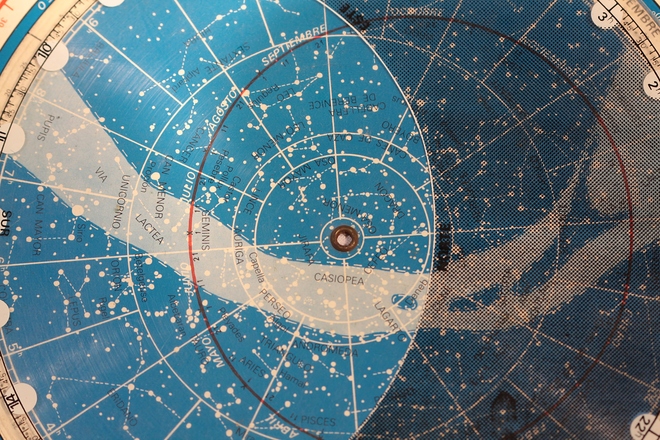
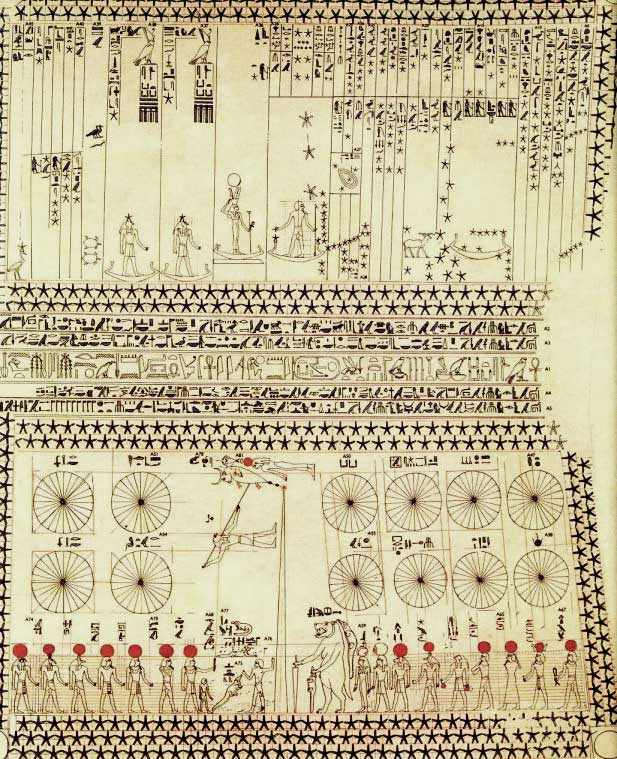


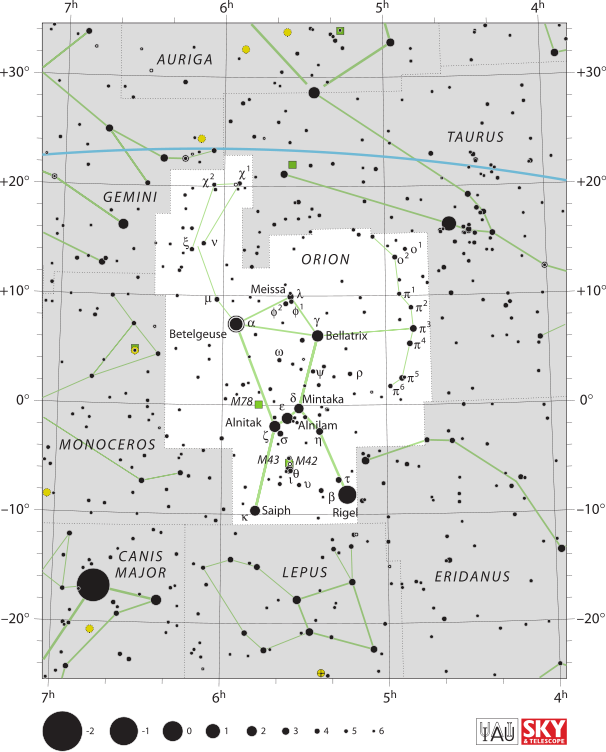
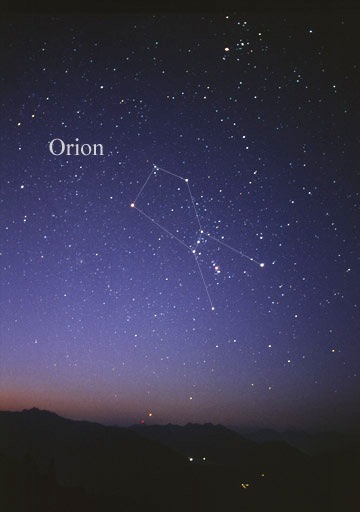
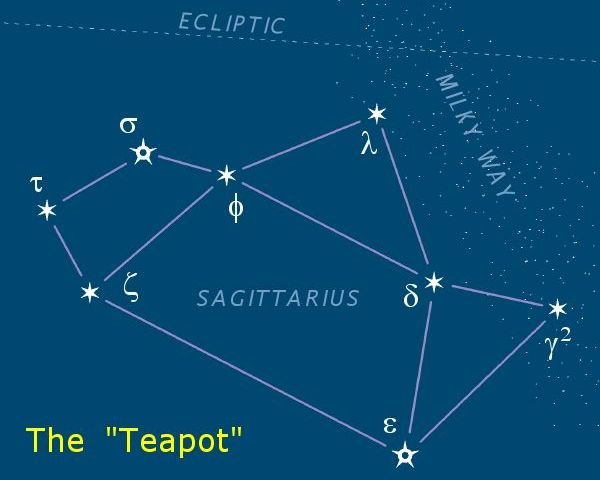
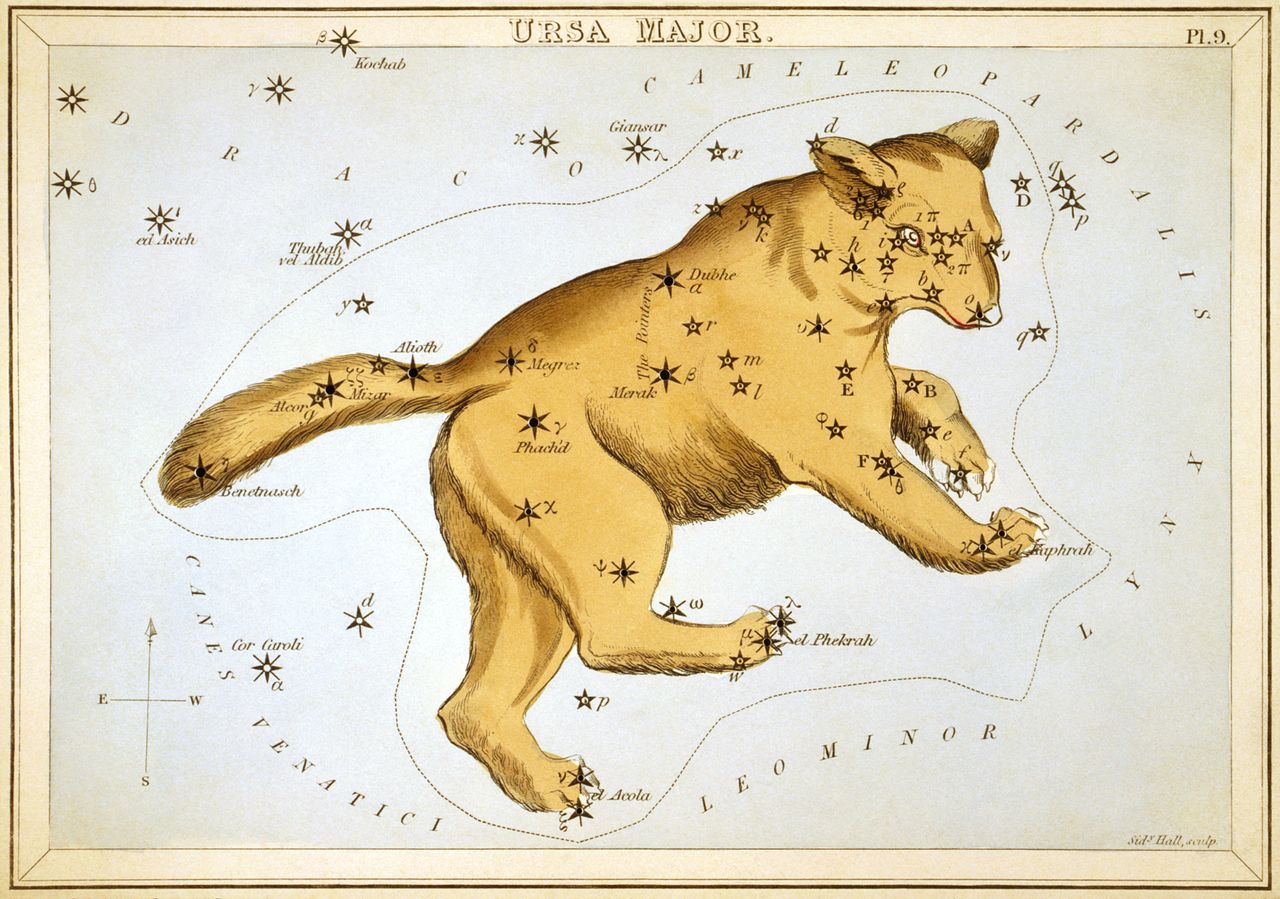
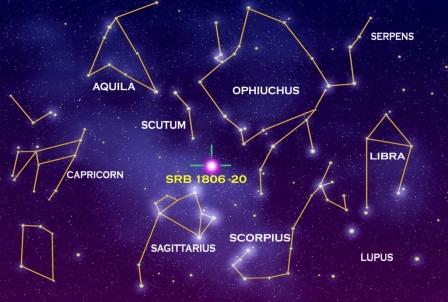
Star Chart of the Constellations
Ancient Egytian Star Chart
Su Song's star map
Johannes Hevelius Orion Constellation
IAU Orion Starchart (Image Credit: IAU and Sky & Telescope magazine)
Orion
Sagittarius and the Teapot
Ursa Major - the Great Bear
Constellations

